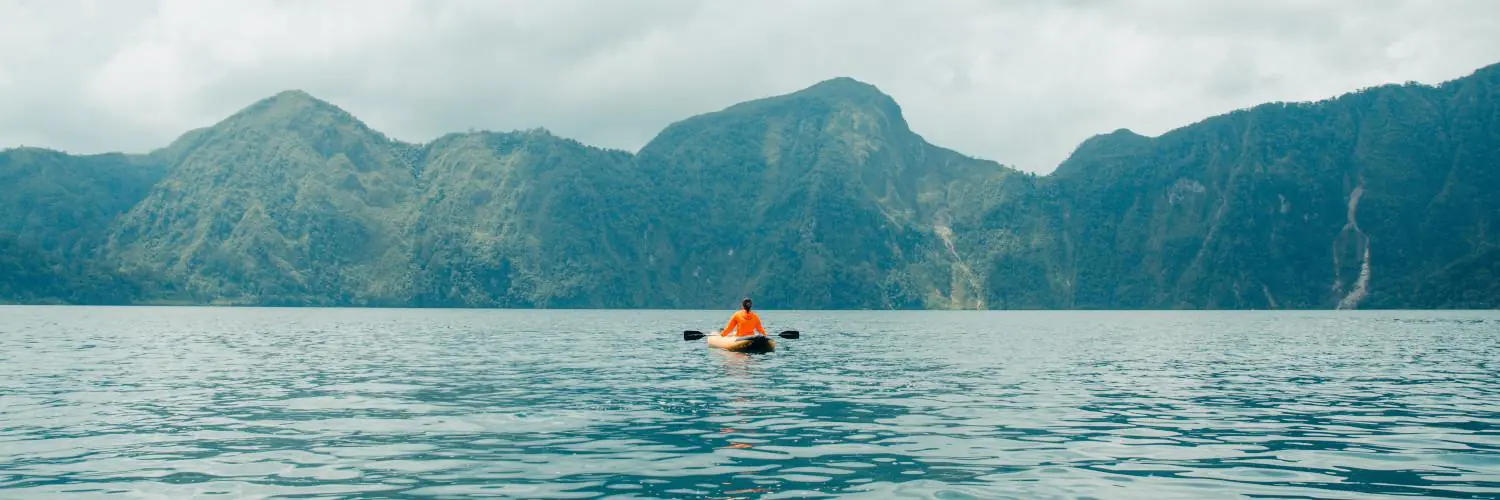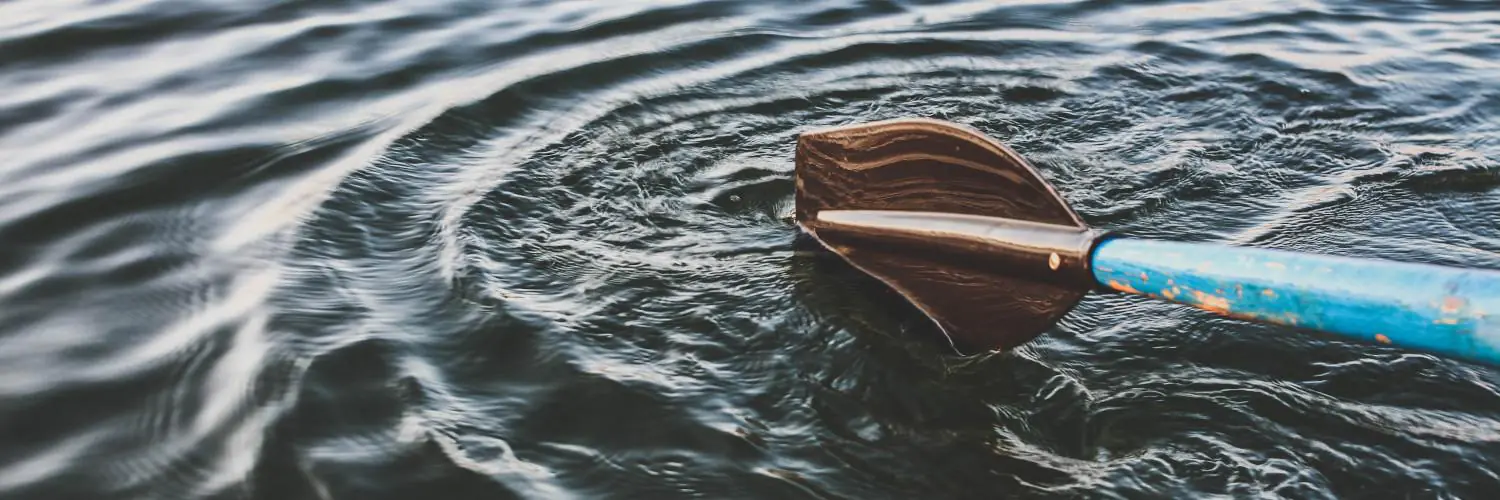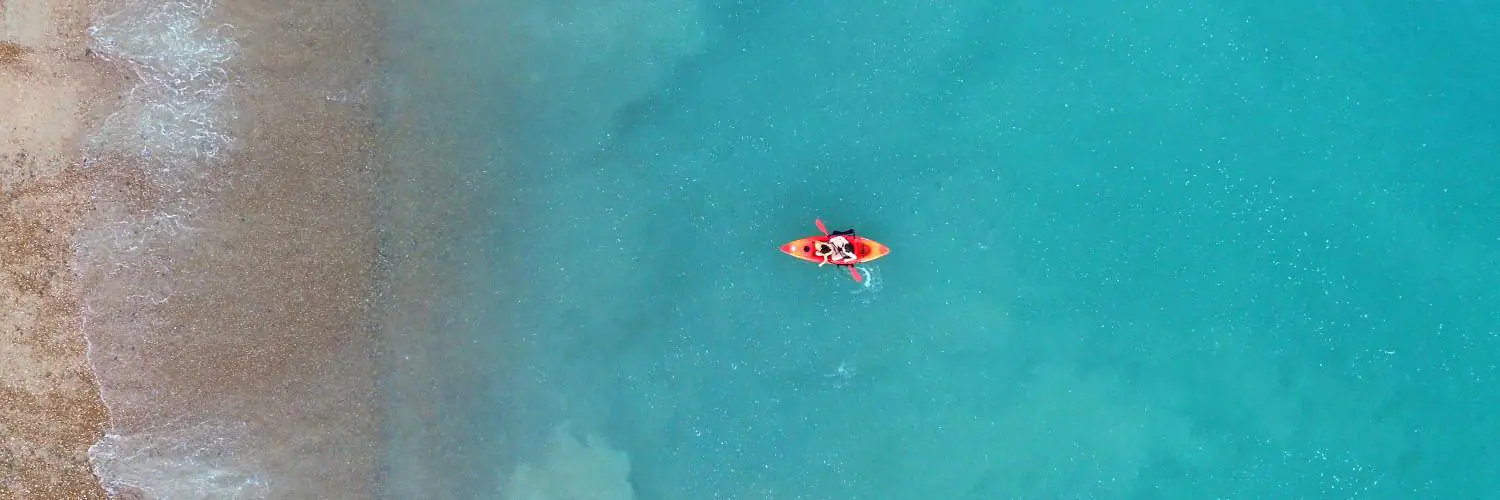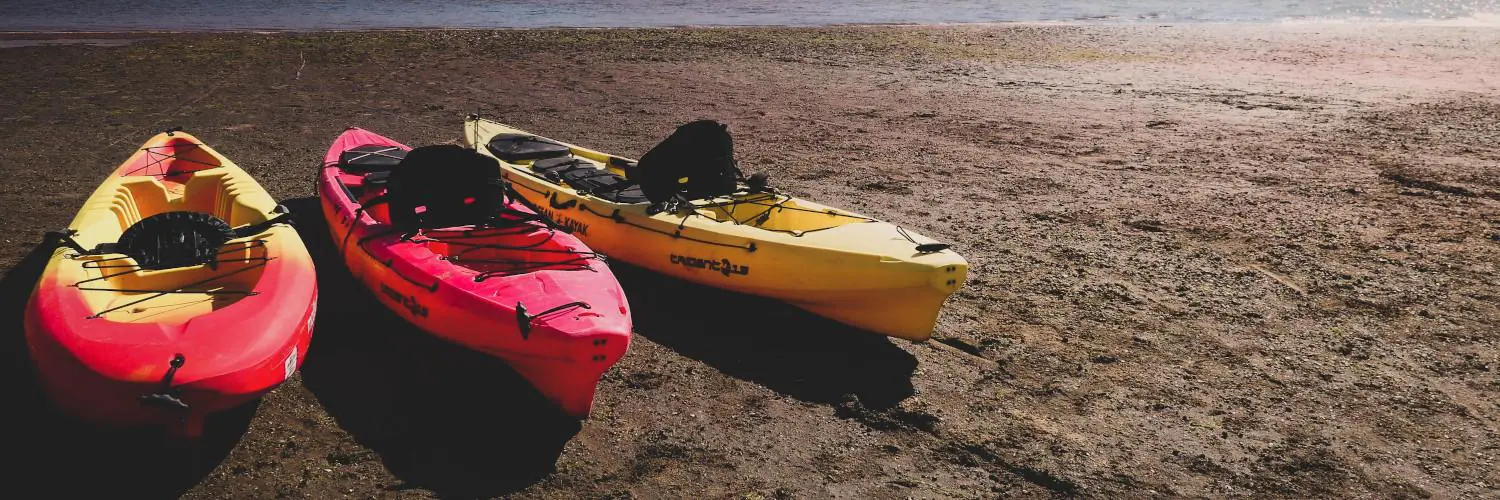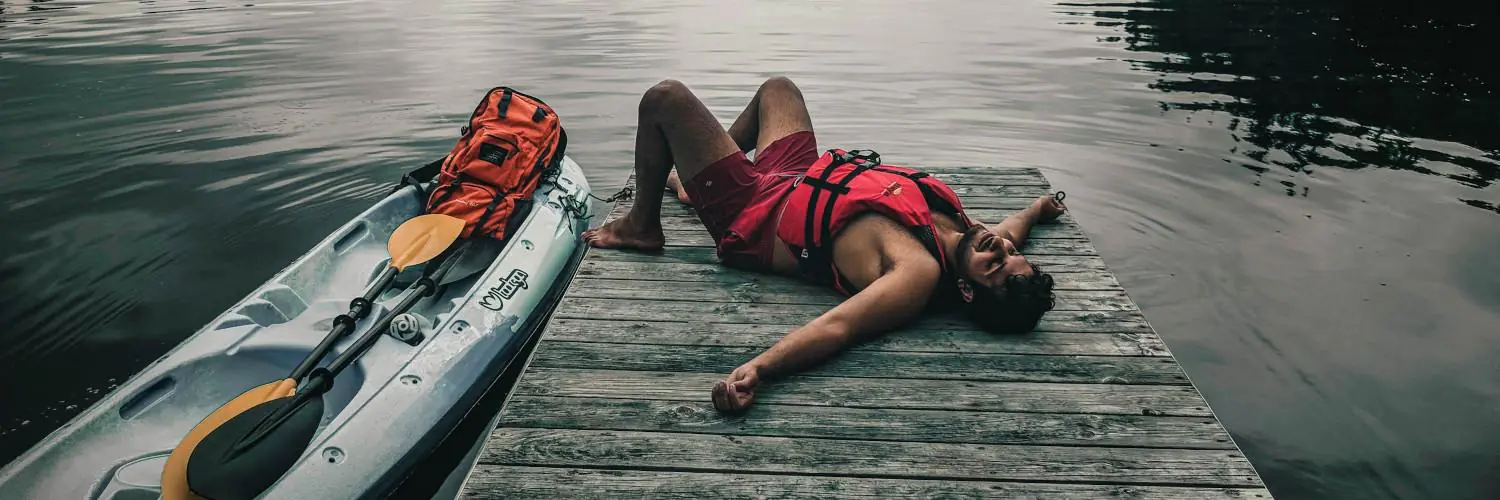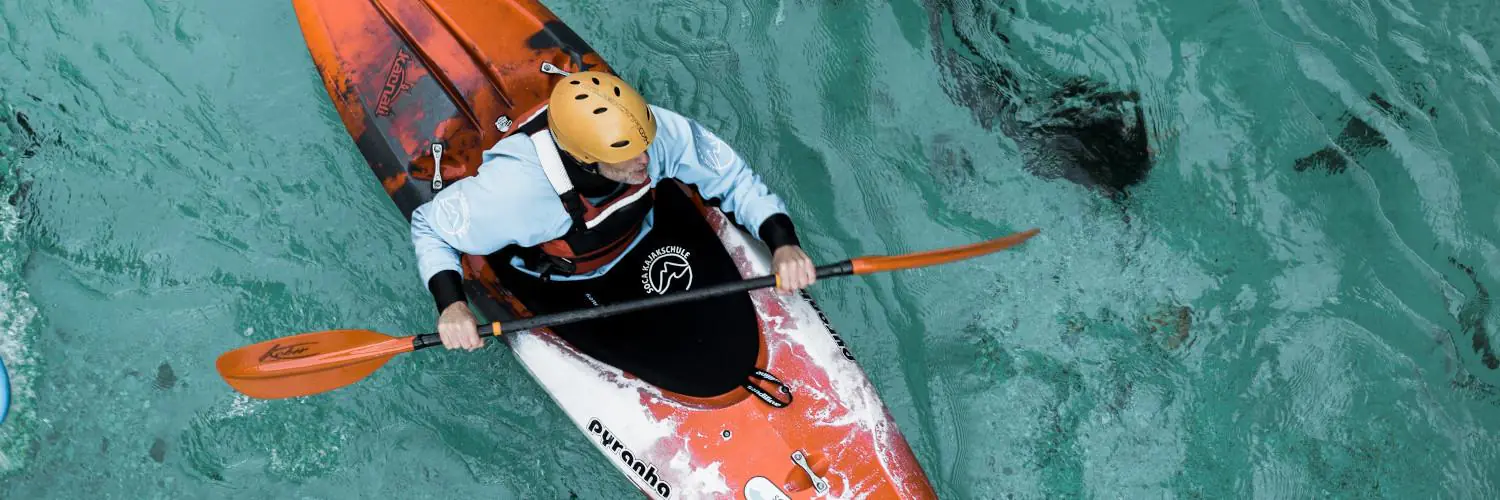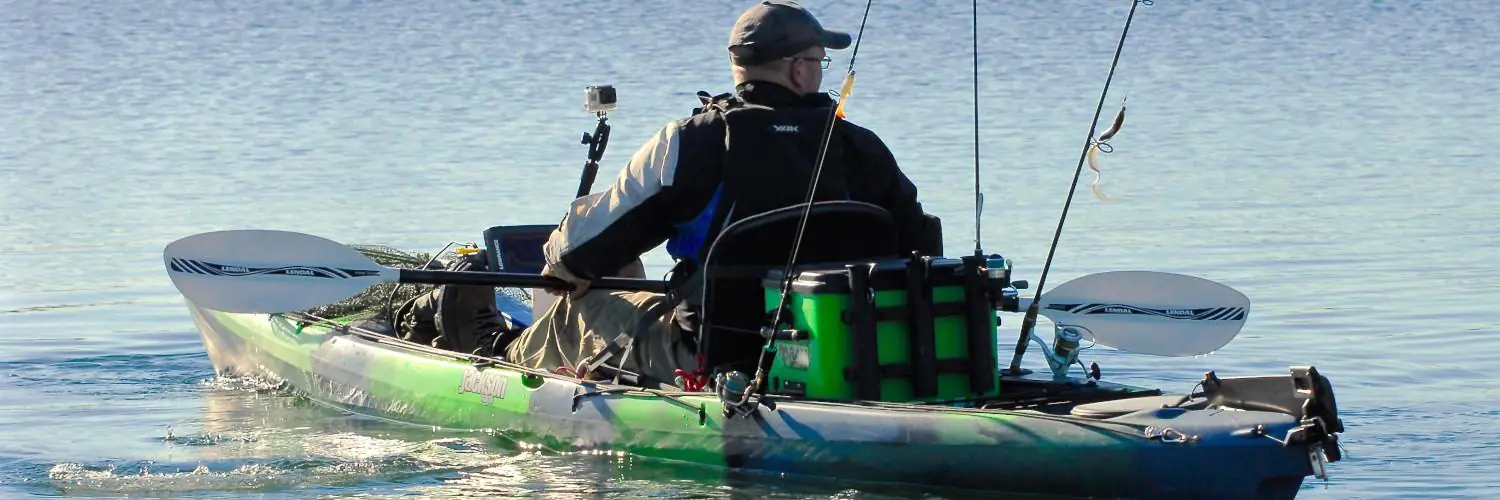Anchor trolleys are game-changers for kayak anglers. These simple systems let you adjust your kayak’s position while anchored without moving the anchor itself. An anchor trolley consists of a rope that runs along the side of the kayak, allowing you to slide the anchor attachment point from bow to stern.
With an anchor trolley, kayak fishers gain better control in wind and currents. You can face any direction while staying in one spot. This means you can cast into the wind or fish across currents more easily. Anchor trolleys also make it safer to anchor in moving water.
Installing an anchor trolley is a common upgrade for fishing kayaks. The basic parts are pulleys, rope, and attachment points. Many kayak brands offer anchor trolley kits made for their specific models. But anglers can also put together DIY setups with some basic hardware. Either way, an anchor trolley adds versatility to kayak fishing trips.
Table of Contents
Essentials of Anchor Trolleys
Anchor trolleys are key tools for kayak anglers. They let you adjust your anchor point easily while on the water. This gives you more control over your kayak’s position.
Understanding the Anchor Trolley System
An anchor trolley is a simple but smart system for kayaks. It’s a rope that runs along the side of your kayak. The rope moves through pulleys at each end. You can slide a ring along this rope. This ring is where you attach your anchor line.
The trolley lets you move your anchor point from front to back. This helps you change how your kayak faces the wind or current. You can do this without moving your whole kayak or pulling up your anchor.
Anchor trolleys work with different types of anchors. You can use them with regular anchors, stake-out poles, or drift chutes.
Benefits of Using an Anchor Trolley on Fishing Kayaks
Anchor trolleys make fishing from a kayak easier and more fun. They give you more control over your kayak’s position. This is really helpful when you’re trying to cast to a specific spot.
With an anchor trolley, you can:
- Face any direction without moving your kayak
- Stay in one spot even in wind or currents
- Fish different areas around your kayak more easily
- Change your position quickly if needed
Anchor trolleys also make it safer to anchor in moving water. They let you release your anchor from any position if you need to.
Components of an Anchor Trolley
An anchor trolley system has a few main parts:
- Pulleys: These are at each end of the trolley. They help the rope move smoothly.
- Paracord: This is the rope that runs through the pulleys. It’s strong and doesn’t stretch much.
- Ring: This slides along the paracord. You clip your anchor line to this ring.
- Pad eyes: These attach the pulleys to your kayak.
- Cleats: These let you lock the trolley in place.
Some systems also have a heavy-duty pulley system. This makes it easier to pull up your anchor.
When you set up your anchor trolley, make sure all parts are secure. Use strong, waterproof materials. This will help your trolley last longer and work better.
Selection Criteria for Anchor Trolleys
Choosing the right anchor trolley for your kayak is key for optimal performance and ease of use. Several factors come into play when making this decision.
Kayak Compatibility
The anchor trolley must fit your specific kayak model. Check the length and design of your kayak before buying. Some trolleys are made for sit-on-top kayaks, while others work better with sit-inside models. Look for universal systems that can adapt to different kayak types.
Measure your kayak’s length to ensure the trolley cord is long enough. Most trolleys come with about 30-35 feet of cord, which suits most kayaks. If you have a longer kayak, you may need to buy extra cord.
Durability and Material
A good anchor trolley should last for many fishing trips. Look for sturdy materials that can stand up to water, sun, and salt.
Cords made of 550 paracord are strong and resist wear. Some, like the YakAttack LeverLoc™ Anchor Trolley, have reflective tracers for better visibility. This is helpful in low light.
The pulleys and other hardware should be rust-resistant. Stainless steel or high-grade plastic parts work well. Avoid cheap plastic parts that can break easily.
Ease of Use
The best anchor trolleys are simple to set up and use. Look for kits that come with all needed parts and clear instructions. Some trolleys, like the YakAttack LeverLoc™, have easy-to-use clamps for fast setup.
Smooth-running pulleys make a big difference. They let you adjust your position with less effort. The YakAttack stealth pulleys are known for their smooth action.
A good locking system is vital. It keeps your anchor in place once you’ve set your position. The LeverLoc™ system is praised for its secure hold and easy release.
Installation Guide
Installing an anchor trolley on your kayak enhances control and positioning. This guide covers the key steps, tools, and tips for a secure installation.
Step-by-Step Installation Instructions
Start by marking the spots for your pad eyes. Place them near the bow and stern, about 6 inches from the ends. Drill holes at the marked spots. Apply silicone sealant to waterproof the holes.
Attach the pad eyes using stainless steel bolts and nuts. Thread the trolley line through the pad eyes. Add pulleys to the line for smooth movement.
Install the cleat near the cockpit. This lets you easily adjust the trolley. Tie off the ends of the line to complete the loop.
Test the trolley by sliding it back and forth. Make sure it moves freely along the kayak’s length.
Tools and Accessories Needed
To install an anchor trolley, you’ll need:
- Drill with appropriate bit size
- Screwdriver
- Wrench
- Silicone sealant
- Measuring tape
Key accessories include:
- Pad eyes (2-4)
- Pulleys (2)
- Trolley line (20-30 feet)
- Cleat
- Stainless steel bolts and nuts
Choose marine-grade materials to resist corrosion. Make sure the line is strong enough to handle your anchor’s weight.
Tips for Secure Fitting
Pick a calm day for installation. Work on a flat surface to keep your kayak steady. Mark all drill points before starting to ensure proper alignment.
Use a backing plate behind each pad eye for added strength. This spreads the load and prevents the bolts from pulling through the kayak’s hull.
Keep the trolley line tight, but not too tight. It should move easily without sagging. Clean up any excess sealant for a neat finish.
Test your anchor trolley system in calm water before heading out on a fishing trip. This ensures everything is working correctly and securely fitted.
Anchoring Techniques
Kayak anchoring requires different methods depending on water conditions and fishing goals. Proper techniques help anglers stay in position safely and effectively.
Anchoring in Shallow Water
In shallow areas, a stakeout pole works well. Push the pole into the bottom and secure it to your kayak. This keeps you in place without swinging. For slightly deeper spots, use a grapnel anchor. Drop it over the side and let it grab the bottom. Make sure the line is taut to hold position.
Anchor from the bow or stern to reduce sideways movement. In very shallow water, you can even step out and anchor by hand. Just be careful not to disturb the area you plan to fish.
Handling Wind and Current
Strong wind or current needs special care. Use a heavier anchor and more line. A good rule is 7 times the water depth for anchor line length. This allows the anchor to dig in at the right angle.
An anchor trolley system helps adjust your position. It lets you move the anchor point along the kayak’s side. This keeps you facing into the wind or current. It also makes it easier to pull up the anchor quickly if needed.
Utilizing Drift Socks
Drift socks slow your kayak in windy conditions. They act like underwater parachutes. Attach one to the bow to drift stern-first. Use two for a slower, more controlled drift.
Adjust the size of the drift sock opening to change your speed. A larger opening creates more drag. Drift socks work well with anchor trolleys too. This combo lets you control both speed and direction precisely.
For the best results, match your drift sock size to your kayak’s length and the conditions. Smaller socks work for light wind, while larger ones handle stronger gusts.
Specialized Anchor Trolley Features
Anchor trolleys have evolved to meet the needs of kayak anglers. New designs and features make anchoring easier and more effective in different conditions.
Innovations in Anchor Trolley Design
Some newer anchor trolleys use high-quality pulleys for smoother operation. These pulleys reduce friction, making it easier to adjust the anchor point.
Many trolleys now come with zig-zag cleats. These cleats hold the line securely but allow quick release when needed. This design is helpful for river anglers who need to change position quickly.
Some trolleys are made specifically for certain kayak brands. For example, some fit Hobie Pro Angler kayaks perfectly. These custom trolleys use the right screw sizes for pre-drilled holes.
Powered Anchoring Systems
Powered systems take the work out of anchoring. These use electric motors to lower and raise the anchor.
With a button press, the anchor drops to the desired depth. Another press brings it back up. This is great for fishing in deep water or strong currents.
Some powered systems can be controlled remotely. This lets anglers adjust their position without moving around the kayak.
These systems often include features like auto-deploy and auto-retrieve. This makes anchoring even easier, especially in bad weather.
Drag Chain and Rope Management
Drag chains are an alternative to traditional anchors. They work well in rivers and moving water.
Some trolley systems now include special holders for drag chains. These keep the chain neat and easy to deploy.
New rope management systems help keep anchor lines tidy. Some use retractable spools to store excess rope.
Others have built-in cleats or fairleads to guide the rope. This prevents tangles and makes it easier to adjust the anchor quickly.
Some systems combine the trolley and rope management in one unit. This saves space and keeps everything organized.

